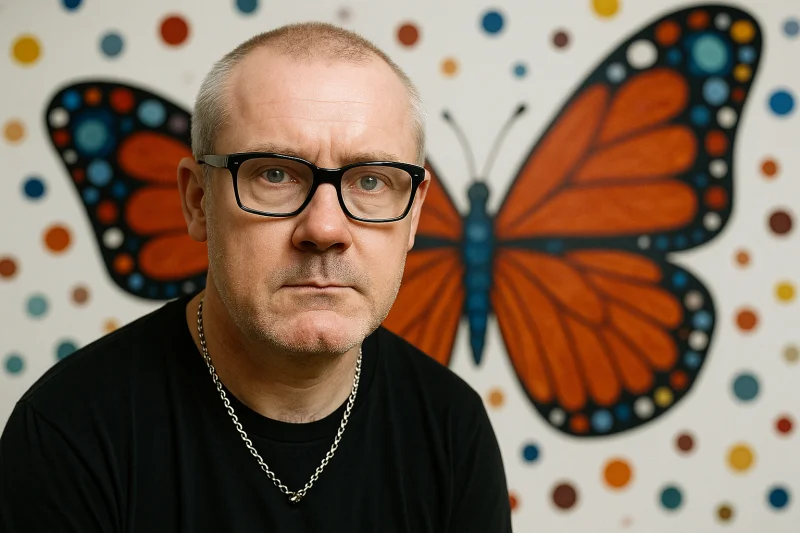Short Summary
Damien Hirst is a British contemporary artist and entrepreneur known for his controversial and thought-provoking works. As a leading figure in the Young British Artists (YBAs) movement, he gained fame in the 1990s for his unique approach to art, which often involves themes of death, life, and capitalism. Hirst's best-known works include his series of animals preserved in formaldehyde, such as "The Physical Impossibility of Death in the Mind of Someone Living." His innovative and often shocking art has earned him both acclaim and criticism, making him one of the most influential figures in the modern art world.
Early Life & Education
Damien Steven Hirst was born on June 7, 1965, in Bristol, England, and grew up in Leeds. Raised by his mother after his parents' separation, he showed a keen interest in art from a young age. Hirst attended Allerton Grange School before enrolling at Jacob Kramer College of Art. In 1986, he moved to London to study at Goldsmiths, University of London, where he graduated in 1989 with a degree in Fine Art. During his time at Goldsmiths, he curated the seminal student exhibition "Freeze," which included works by several artists who would later become prominent members of the Young British Artists movement.
Career Highlights
Hirst's career took off in the early 1990s when he became a leading figure in the Young British Artists movement. His series of animals preserved in formaldehyde garnered significant attention, establishing him as a provocative and innovative artist. By the mid-1990s, he was represented by the influential art dealer Charles Saatchi, which helped to further his reputation. In 1995, he won the Turner Prize, a prestigious award for contemporary art. Throughout his career, Hirst has explored various mediums, including painting, sculpture, and installation, consistently pushing the boundaries of contemporary art and challenging societal norms.
Major Achievements
- Turner Prize (1995) - Awarded for his contributions to contemporary art, recognizing his impact on the art world.
- "The Physical Impossibility of Death in the Mind of Someone Living" - An iconic work featuring a shark preserved in formaldehyde, epitomizing his exploration of death.
- Diamond Skull "For the Love of God" (2007) - A platinum cast human skull encrusted with diamonds, symbolizing the intersection of art, life, and commerce.
- Record-Breaking Auction (2008) - Hirst held a solo auction at Sotheby's, raising over £111 million, challenging traditional art sales channels.
Famous Quotes
- "Art's about life and it can't really be about anything else... there isn't anything else."
- "I always feel like the art's there and I just see it, so it's not really a lot of work."
Interesting Facts
- Hirst was a key figure in the "Cool Britannia" cultural movement of the 1990s.
- He co-founded the restaurant "Pharmacy" in Notting Hill, London, which was themed around pharmaceuticals.
- In 2012, Hirst had a major retrospective at Tate Modern, showcasing his work from over two decades.
- He is one of the world's wealthiest living artists, with a fortune estimated in the hundreds of millions.
Legacy / Influence
Damien Hirst's legacy in the art world is marked by his ability to challenge and redefine contemporary art. His work has influenced a generation of artists to explore bold and unconventional themes. By merging art with commerce and embracing controversy, he has left an indelible mark on the global art market. Hirst's approach continues to inspire debates about the nature and purpose of art in modern society, ensuring his lasting influence on the cultural landscape.
FAQ
Q: Why is Damien Hirst famous?
A: He is famous for his provocative and innovative contemporary art, particularly his work with preserved animals and exploration of themes like death and capitalism.
Q: What is Damien Hirst's most famous work?
A: One of his most famous works is "The Physical Impossibility of Death in the Mind of Someone Living," featuring a shark preserved in formaldehyde.
Q: Has Damien Hirst won any major awards?
A: Yes, he won the Turner Prize in 1995 for his contributions to contemporary art.












